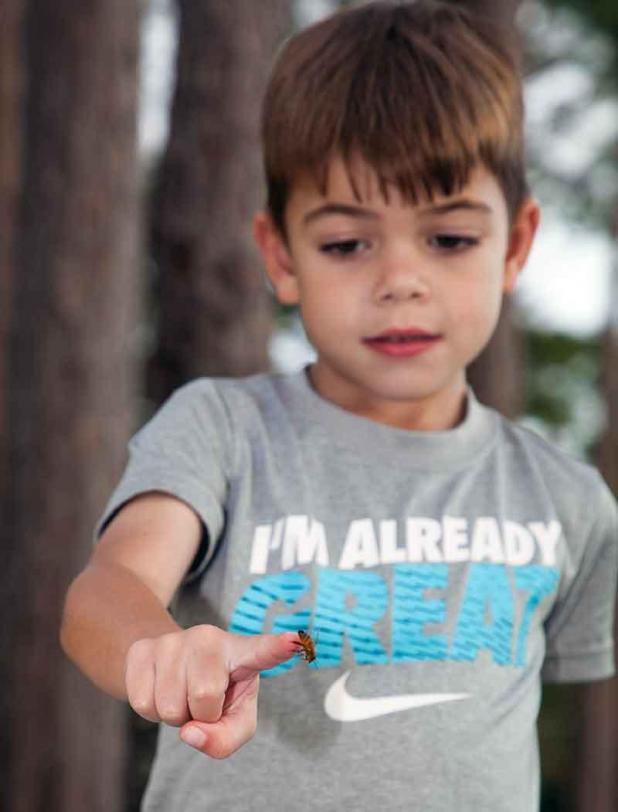
The author’s grandson Eli learned how honeybees are docile during a swarm.
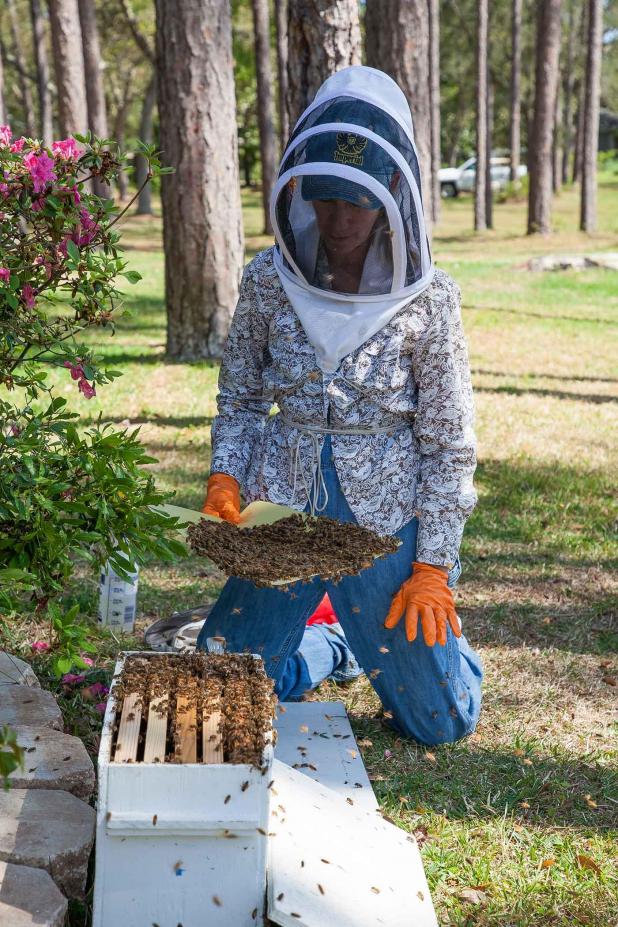
Christel Hixson, manager of Hillcrest Farm, looks through a tray of honeybees in search of the queen bee.
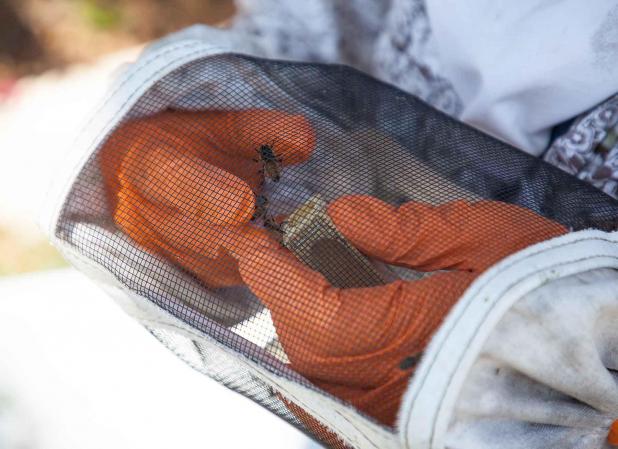
To prevent the queen bee from escaping, Hixson uses a bee-muff to transfer the queen into a small box that will be placed inside the hive.
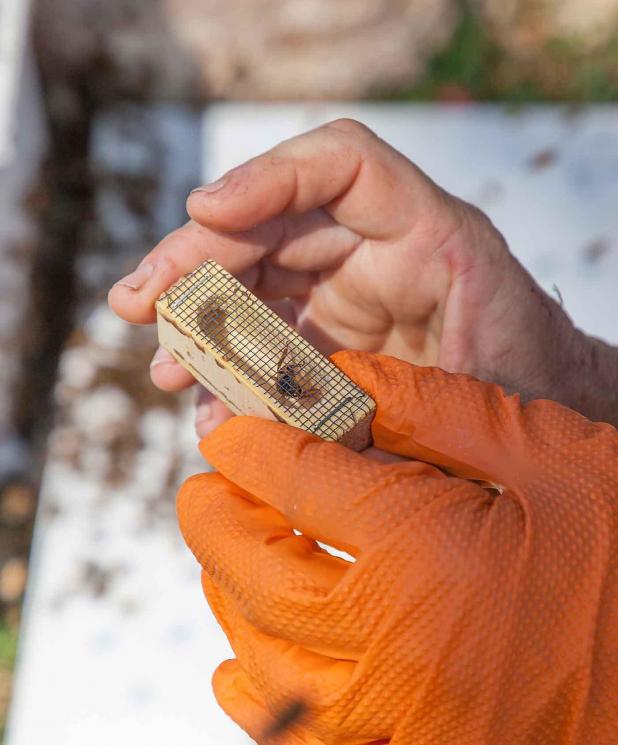
The queen be inside a small box enclosure that will be placed in the commercial hive box.
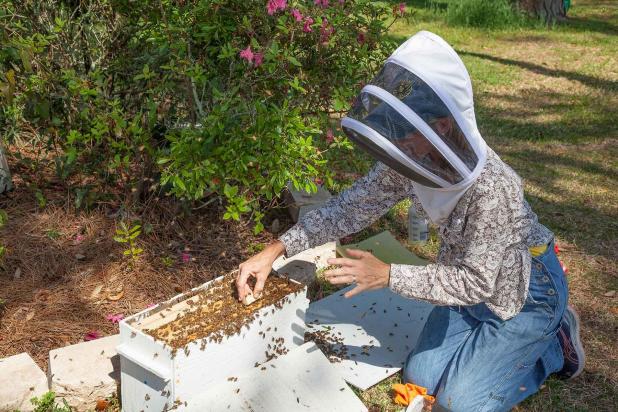
Christel Hixson places the queen be in the commercial hive.
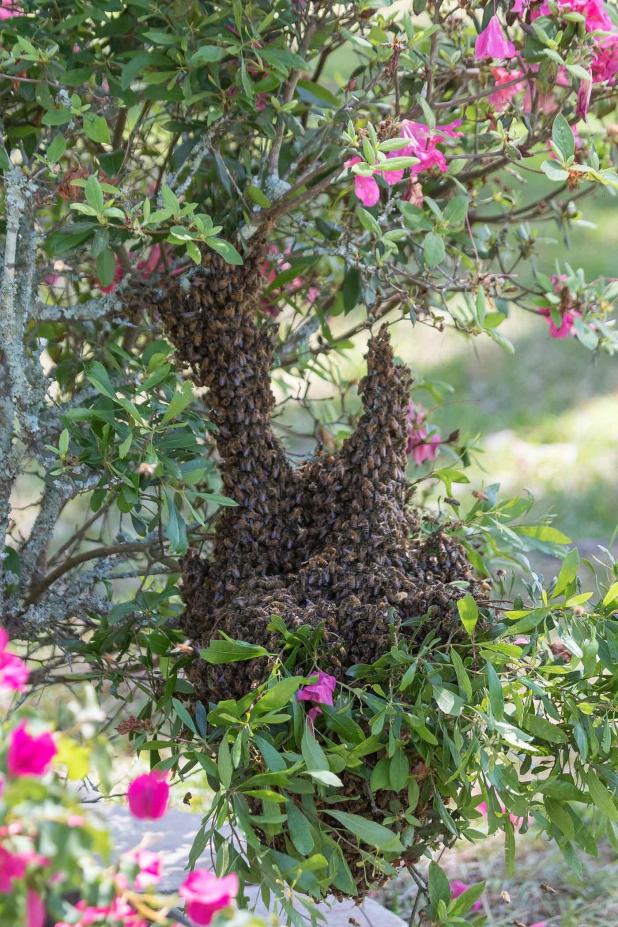
The honeybee swarm clings to the limb of an azalea bush. This is when honeybees are most vulnerable.
John Flores: Late spring honeybee swarms become a teachable moment
If you’ve ever encountered a swarm of honeybees in the wild it can be a quite unnerving experience. The first time I happened to see a swarm, my spouse and I were catfishing one spring in Big Beach Bayou near a little pipeline drain called Roberts Ditch.
There was a hollowed out tree next to the ditch where we always mopped up on the perfect pan-frying size channel cats. We were anchored out in the middle, when suddenly bees began to swarm and not just a few. Thousands! Thousands upon thousands!
They circled around and around above the tree and the one thing you noticed was how loud they were. Though they never stung or really bothered us, some of them started to check out the boat and hover over it. We decided to move. I guess the conjured-up fear of Africanized honey bees, also known as killer bees that were first discovered in the United States in the early 90s, got the best of us.
Of course, we were wrong. All that was going on was a late spring swarm when honeybees reproduce and attempt to locate places to propagate. Our fishing spot would forever be known as “the bee tree.”
The next time I got to observe a swarm was in my own yard several years ago, after honeybees took up residence in one of the birdhouses I put up. They lived in the house for the better part of a year and the following spring swarmed.
They formed a large protective ball around the queen and clung to a limb of a cottonwood maple tree in our front yard while worker bees went about scouting for a better location. We took a few pictures of them that evening and the next day they were gone.
This spring our entire family got to see a swarm in Alabama at the house where we were spending the weekend. These events are always amazing.
The residence was our daughter-in-law Sarah’s grandparents’ house that her family now uses as a weekend, summer and holiday vacation home near Perdido Bay. The bees had formed a basketball size mass around a lower limb of an azalea bush in the backyard.
Sarah called her father and asked what she should do. He gave her the numbers of a couple of beekeepers in the area she might try to call and come remove them.
It wasn’t long before Christel Hixson, manager of Hillcrest Farm, came over to collect the honeybees. Sarah couldn’t have chosen a better person, because as soon as Hixson arrived, she was surrounded by 12 people eager to see and learn how she was going to handle the crisis.
Hixson, a slender woman with a gentle and soft-spoken demeanor went to her truck and brought back a smaller version of a commercial beehive and placed it near the swarm. Inside the box was a tray with an old honeycomb, some lemongrass, and sweet stuff to coax bees into it.
After donning the customary beekeepers hood and a pair of gloves, Hixson took a spray bottle with a sugar and water mixture and sprayed the bees. The mixture made them stick together in a clump and she simply brushed them onto a rectangular pad and gently poured them into the bee box while searching for the queen at the same time.
While searching for the queen Hixson said, “You can tell which one the queen is because she is larger than any other bee. And drone bees, which are males, are larger than worker bees.”
“You can also tell the difference between a queen that has laid eggs and a virgin queen,” Hixson continued, “because a virgin queen is a little longer and slimmer.”
Hixson mention that virgin queens that haven’t mated can also be kind of flighty too. Apparently, that was the case with our particular queen as it initially flew off, but moments later returned to her realm.
Honeybees that are clinging to a limb or branch in a massive ball are extremely docile and at the most vulnerable moment of their lives. Our six year-old grandson gently placed his index finger near the tray Hixson brushed the bees off of. They crawled onto his finger never once posing a threat of perhaps stinging him. Instead, their meekness increased his curiosity and opened a whole new world of insects to him.
When looking at a basketball size wad of honeybees you can’t help but wonder how many bees are you looking at?
Hixson said, “With beekeepers the hives split more often and a typical hive may have as many as 50,000 or more bees.”
Hixson’s small temporary hive was more than adequate for the swarm we were all observing. She estimated the little hive would hold about 12,000 to 15,000 honeybees. Just for perspective, 30,000 honeybees would halfway fill a 5-gallon bucket.
When Hixson finally found the queen, she used what looked like a hairclip to scoop her up. The queen was then transferred to a bee muff where Hixson could more easily handle her without the possibility of escape.
Inside the muff the queen was placed in a small wooden box with a screen. Bees communicate in two ways; movement and odor. The little screened box was placed inside of the temporary bee hive, where the queen immediately began releasing pheromones.
In literally seconds the worker bees began forming a ball around her. Once Hixson placed the lid on the hive, the remaining worker bees began to use the entrance to go inside to join her. By late afternoon, only a few honeybees could be seen flying around the box.
The biggest threat to honeybees Hixson says is the varroa mite. The parasitic mites attach to the body of honeybees and larvae and feed off of their body fat, thus making them weak and vulnerable to viruses.
As it turns out Hillcrest Farm and Vineyard is one of those little gems you find when traveling. The farm has been owned and operated by the Hixson family for over 40 years. The u-pick farm offers fresh fruits and vegetables along with many homemade products such as jellies, jams, or preserves. And of course, “honey!”
For more information on Hillcrest Farm go to their Hillcrest Farm Facebook page. Or simply email them at hillcrestfarmupick@yahoo.com
